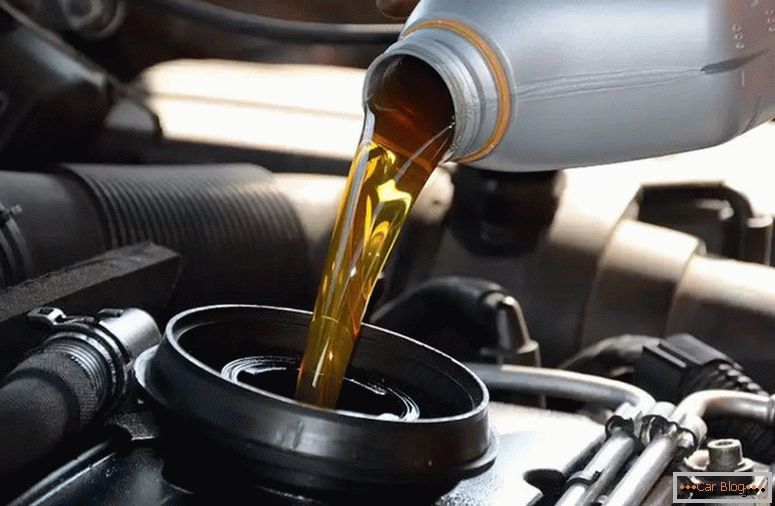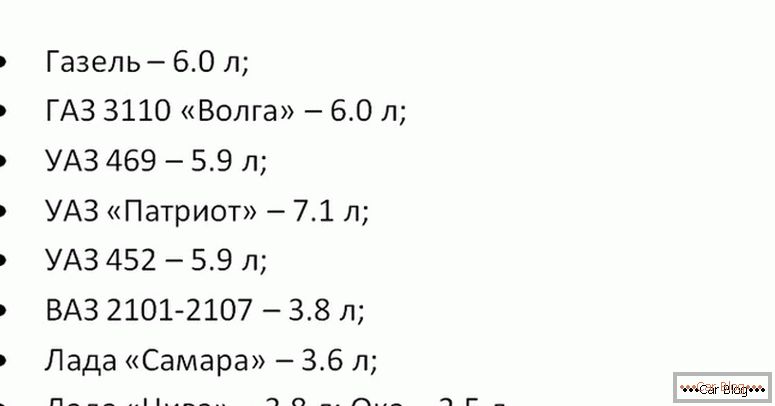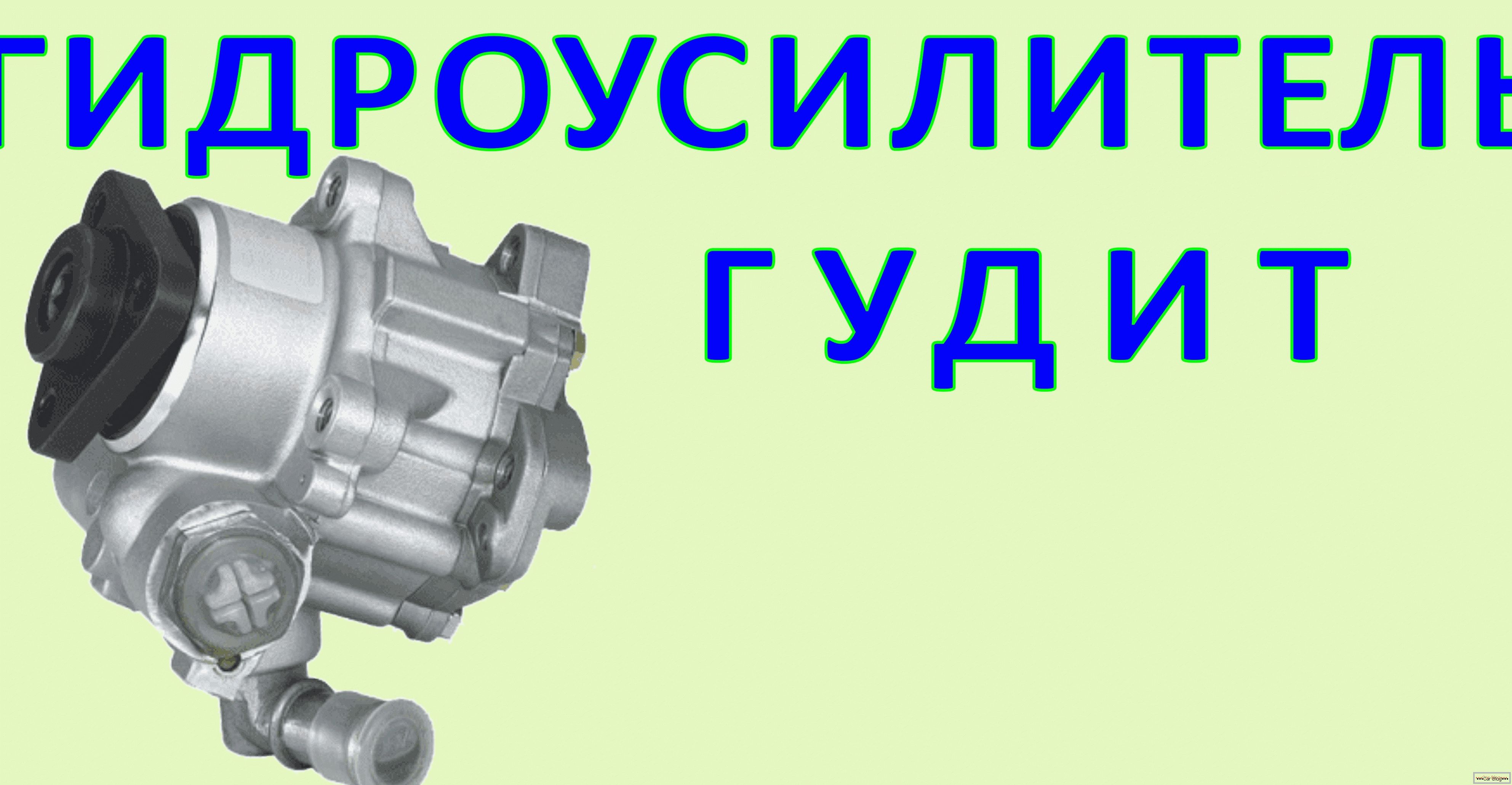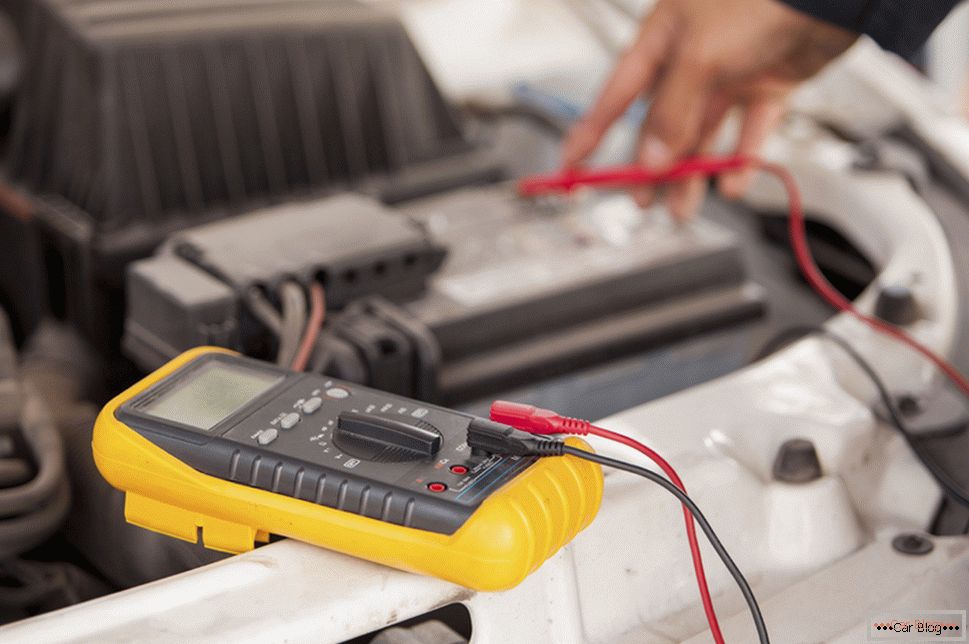Modern car is a complex set of units, components and systems. For its performance requires a variety of fluids, one of which is motor oil. The ability of the machine to fully perform its functions depends on its quality and quantity in the working cavities.
Чтобы мотор работал без сбоев, автовладелец должен знать, how much oil should be poured into the engine. Значительное отклонение от нормы не допускается. Также важно уметь самостоятельно доливать жидкость и иметь определенный ее запас.
Content
- 1 Determining volume in several ways
- 2 Flow control
- 3 Topping up
- 4 Important parameters
Determining volume in several ways
About how many liters of oil in the engine, you can find out in several ways:
- The most convenient option is to open the instruction manual, which was provided with the vehicle, and look at the appropriate table. In addition to the new car comes a few bulky books, one of which is the user manual. In the technical specifications section there is the necessary data. It is worth scrolling to the subtitle describing the lubrication system. In modern cars with internal combustion engines of 1.4-1.8 liters, this parameter is in the range 3.5-5.5 liters. There will also be recommendations on the choice of the type of fluid and the degree of its viscosity. In some cases, two values may be present. One of them is relevant when replacing the filter (it will be higher), and the second will be without replacing the filter (smaller value).
- When the instruction is lost or not preserved, the real data can be obtained on the official website of the car manufacturer. Sometimes resources offer to download the manual in full in a single file. Also information about how much oil you need to replace in the engine can be placed in a separate table with the characteristics for a particular type of engine. Type the engine yourself. Manufacturers in the recommendations indicate the types of oils produced either under their own brand, or from partner companies. In reality, you can pour similar liquids with the same technical parameters as the manufacturer of the car. It is important to pre-check for certificates.
- Another source of information are specialized sites that help to carry out the selection of oil. Enough in the search form on the resource to enter data about the brand, model, year of production of the machine, type of motor, the result will be the desired number. We recommend purchasing liquid packaging with a small margin in order to timely add liquid.
- The current oil level is determined using a dipstick. The meter is always at one end in the liquid. To measure, you need to install the machine on a flat surface and wait for the engine to cool. We take out the dipstick, wipe its end with a dry napkin and return it back, pull it out again and look at what level the oil reaches on the dipstick. The wetted end should have a level between the risks of max and min.
Flow control
Usually during the operation of the engine part of the oil burns out, and part of the volume is lost through the crankcase. It must be periodically refilled to maintain a working balance.

It is necessary to know that the oil consumption of different cars at different times is not constant.
The amount by which the lubricant “thaws” depends on various factors. Here it should be noted:
- Physical and technical condition of the power plant and cars in general. A new car and a car after a recent overhaul will spend significantly less lubrication. For cars with high mileage, this value will be significantly higher.
- Operating conditions. Urban travel patterns, when you often have to stand in traffic jams and stop at traffic lights, are accompanied by active starts and intensive braking modes. This type of ride is quite high loaded, although in reality there is a relatively low mileage. Some cars traveling on country high-quality tracks may have more mileage, but less wear on the engine.
- Type of motor oil. The amount of oil in an engine is influenced by the type of specific oil. Choose between synthetics, semi-synthetics and mineral water.
- Climatic conditions. Fluid is affected by ambient temperature. It is considered that regions with a continental climate with too hot summers and extremely cold winters are topped up much more frequently than car owners with moderately warm summers and relatively cold weather.
Necessity topping
Need to timely control the amount of oil in the engine. For this is used in all motors probe. If the level is normal between risks, then this ensures safe operation of the motor. Insufficient volume will affect the provision of lubrication crankshaft necks.
Rubbing parts will overheat without oil. Dry friction can lead not only to overheating, but also to undesirable jamming. The engine simply can not turn the crankshaft. This will lead to a very expensive repair.
See also: How the car behaves if the lambda probe does not work
To effectively operate the vehicle, the driver must have an idea of how much oil is in the engine. Before a long journey, we recommend stocking up with a small amount of lubricant for topping up to 300-400 ml. In this case, the level should be kept close to the upper risk, but not overflowing the excess.
Important parameters
It is not necessary to ensure the overflow of lubricating fluid, as this contributes to the increase of its pressure in the system. This parameter adversely affects the operation of the entire power plant. As a result, liners of the crankshaft fail, for their replacement it is necessary to disassemble the engine.
It is necessary to be guided by recommendations of the automaker on the use of the type of oil. It is forbidden to mix different in the structure of the liquid, as they have different chemical composition and are able to react with each other. As a result, undesirable structures are formed, which do not perform their functions effectively, and the engine can jam while driving.
It is possible to add dissimilar oils only in emergency situations, when the distance to the destination does not exceed 40–50 km, while driving at the lowest possible speed, not exceeding 40–50 km / h. After all the liquid is drained, the motor is washed and the necessary oil is poured.



